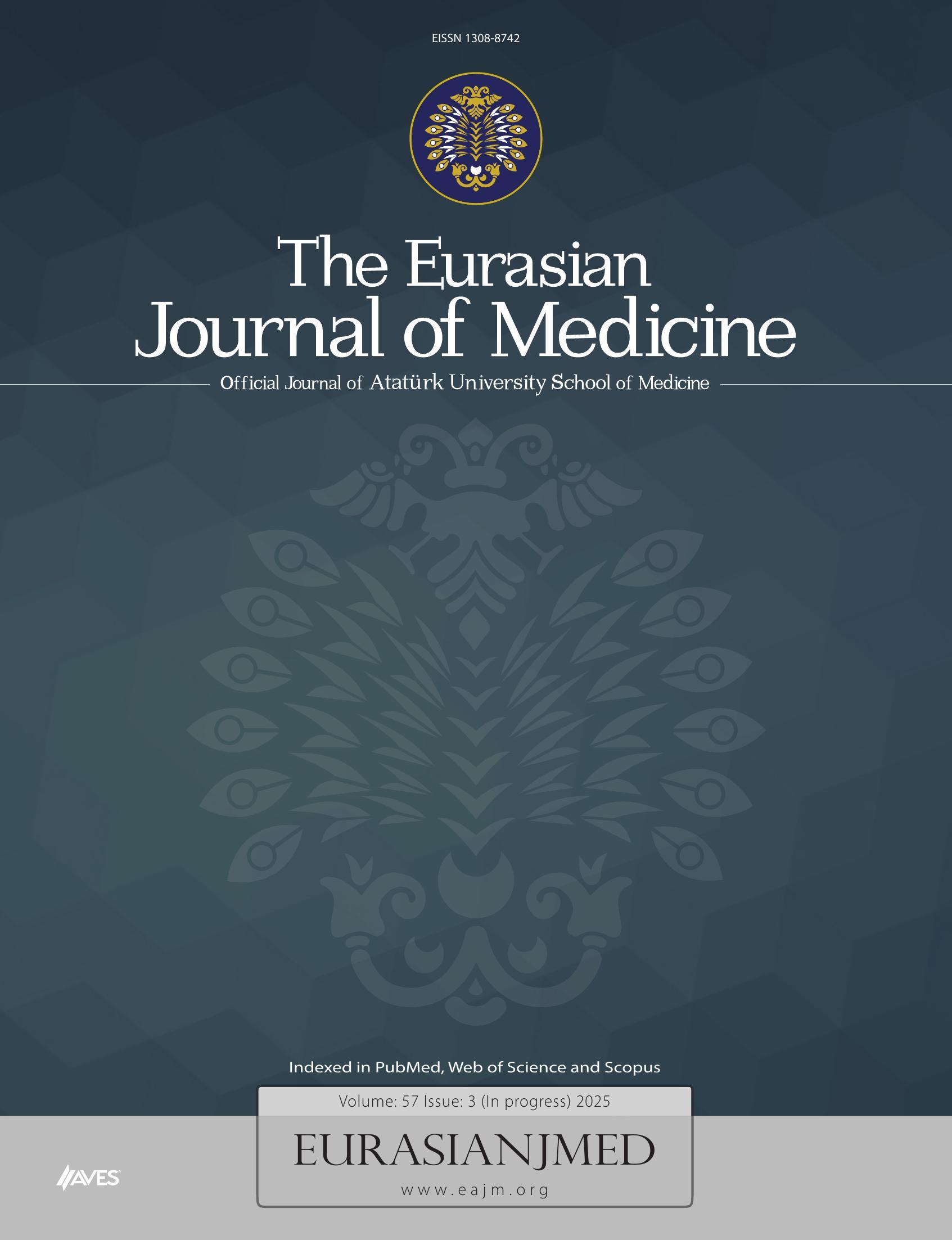Abstract
Objective: The primary aim of this study is to compare tibial tuberosity–trochlear groove (TTTG) distance in patients with or without knee osteoarthritis. Additionally, the variability of tibial tubercle according to trochlear groove was evaluated.
Materials and Methods: In this retrospective cohort study, TTTG distance was measured with two different methods on magnetic resonance (MR) images. TTTG distance was measured by the familiar method on 173 MR images, and by the novel method on 157 MR images of 175 patients totally. The patients were divided into two groups as group 1 (Kellgren Lawrence osteoarthritis grade <2) and group 2 (Kellgren Lawrence osteoarthritis grade ≥2). TTTG values measured by both methods were compared between groups. The coefficient of variation for all patients in TTTG values were calculated. A p-value <0.05 was considered as significant.
Results: The mean age, sex distributions, and side ratios were different between groups. There was no statistical difference in TTTG values between group 1 and 2. There was no statistically significant difference between the two measurement methods. The coefficient of variation for all patients in TTTG values were high (43.95% for familiar method and 44.64% for novel method). There was excellent interrater reliability for two measurement methods in both groups.
Conclusion: The TTTG distance is similar in patients with/without knee osteoarthritis. The position of the tibial tubercle according to the trochlear groove is variable, so the tibial tubercle may not be a good reference point for rotational position of the tibial component in total knee arthroplasty.
Cite this article as: Sahin N, Atici T, Ozkaya G. Tibial Tuberosity–Trochlear Groove Distance Shows no Change in Patients with or Without Knee Osteoarthritis. Eurasian J Med; 38-41.

.png)


.png)
.png)